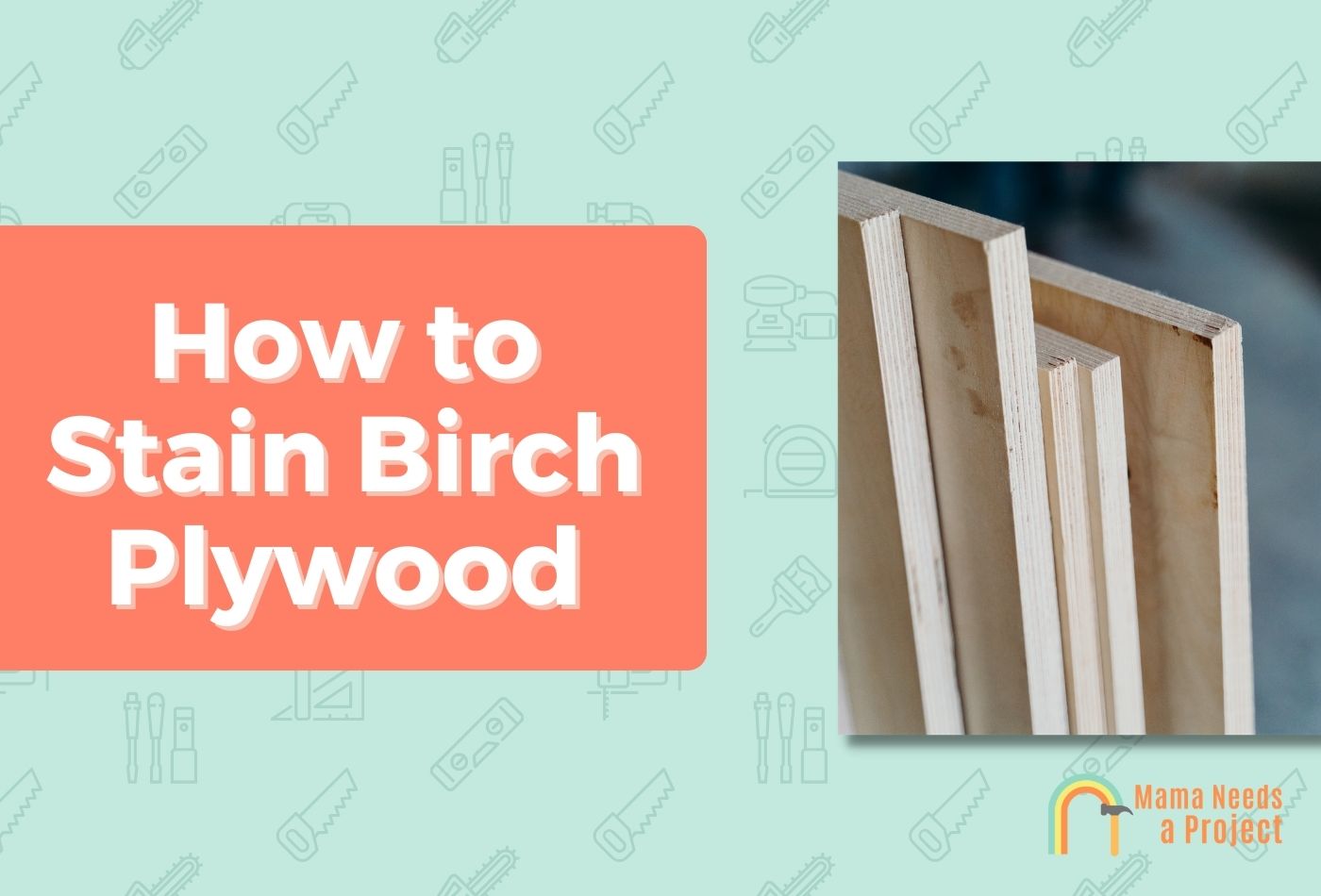Staining Birch Plywood (Step by Step Guide)
Birch plywood is a versatile and relatively inexpensive veneer compared to other types of hardwood plywood, but one of the challenges it presents is that it’s a little harder to stain.
But don’t worry! I’ll explain everything you need to know about staining birch plywood including some tips and tricks for staining birchwood. Let’s get started!
- With the right preparation, careful attention to detail, and the proper tools and materials, you can successfully stain birch plywood.
- You can use many different types of stain for birch plywood, including dark stains like walnut and mahogany.
- Avoid blotchy and messy stain jobs by using a pre stain conditioner and prepping wood before applying stain.
Can You Stain Birch Plywood?
Yes, you can stain birch plywood!
However, it’s a little more resistant to staining than other types of wood because it has smaller pores and higher density. So, yes, you can stain birch plywood, but it takes a little more preparation and attention to detail.
If you’re short on time, you may want to choose another type of plywood that stains more easily than birch, such as oak or pine. But if you like the straight-grained pattern of birch and want to maximize your project with its strength and durability, then taking the time to stain birch plywood is well worth the effort.
When you’re staining birch plywood, preparation is key, but you also need to choose the right type of wood stain. Water based stain is usually preferred over oil based stain for birch plywood because oil is thicker, and it’s harder to get it into the pores of the wood.
How to Stain Birch Plywood
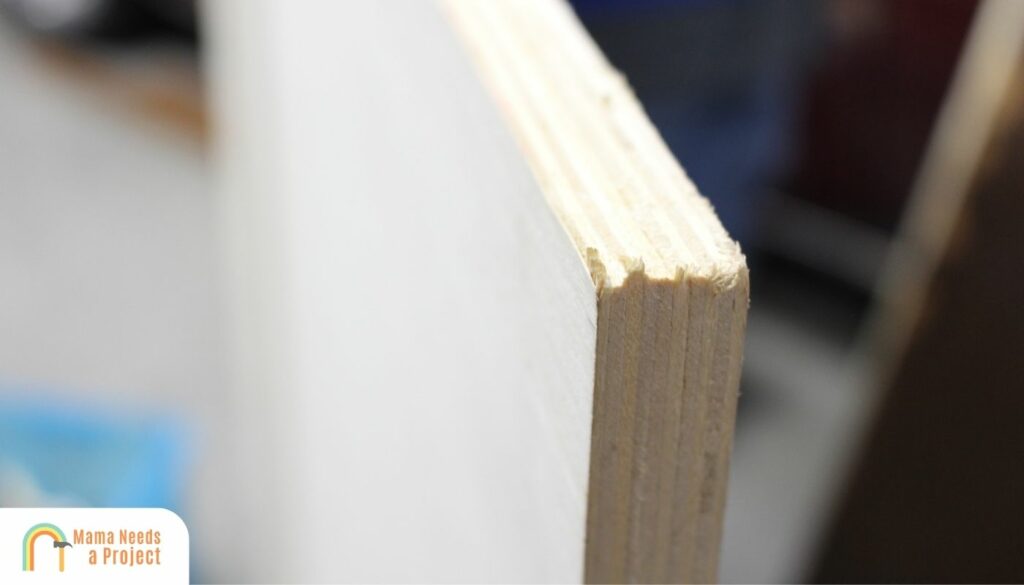
1. Gather Tools and Materials
The right tools and materials make any DIY job easier. When staining wood, I like to have everything I need at my fingertips so my work goes as smoothly as possible. Having everything on hand before I start saves me a lot of time and headache and it helps to avoid unnecessary trips to the hardware store mid-project.
Use this checklist to gather the tools and materials that you need for staining birch plywood:
- Wood stain
- Wood finisher
- Paint stirrers
- Nitrile, latex, or vinyl gloves
- Lint-free rags and wood stain pads
- Containers for mixing
- Foam brushes
- Natural and synthetic bristle brushes
- Painter’s tape
- Sandpaper and sanding sponges
- Paint roller (optional)
- Paint sprayer (optional)
- Heavy-duty drop cloths
- Sawhorses
- 2x4s
Depending on the application method you use, you may not need all of these tools, but many of them can come in handy. If you’re using oil based stain, you should also have a respirator and fans for ventilation to protect yourself.
2. Preparing Your Work Area
An indoor work area is the best for wood staining projects, but of course, not everyone has the space for that. If you have to work outside, try to work undercover or choose a couple of days when precipitation isn’t in the forecast.
If you’re working in your garage, be sure to crack the garage door to let to fumes of your stain out.
It helps to elevate your plywood when you’re staining it, so I like to set up a couple of sawhorses with 2x4s stretched across them so I can tackle as many sheets as needed. Whether you work outside or indoors, you’ll want a heavy-duty drop cloth to avoid staining your floors or landscaping.
Once you have everything set up and all your tools and materials ready to go, it’s time to get started!
3. Sanding
When you’re preparing birch plywood for staining, cleaning and sanding the surface of the wood is the first priority.
You might be wondering why you need to sand plywood before staining. Wood that has been sanded is more receptive to accepting stains, which is a critical part of the staining process for birch plywood.
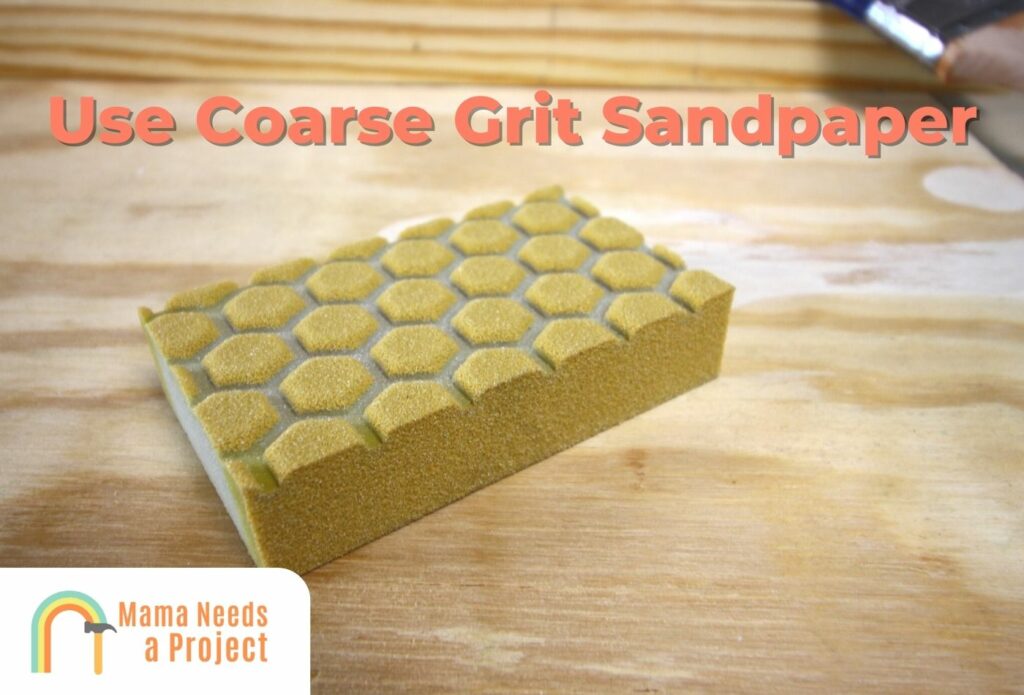
When sanding wood, you want to start with a rough grit sandpaper and work towards a finer grit. Since birch plywood is already pretty smooth when you purchase it, you can start with 120 grit sandpaper. For the second sanding, move to 150 grit, and then for the final sanding, use 180 grit.
You can use an orbital sander, sandpaper with a sanding block, liquid sandpaper, or sanding sponges. I like to use an orbital sander because it’s faster and takes a lot less elbow grease! However, you have to be careful using an orbital sander to not scratch or damage your wood.
Generally, the finer the grit you use, the lighter the color you’ll get when you’re staining. Since birch wood is less receptive to stain, you don’t want to use anything over 180 grit, or you risk closing the pores even more.
4. Pre Stain Conditioner
Using a pre stain conditioner will help the birch plywood accept wood stain more evenly, so it’s another important step in the process. It doesn’t take long to apply a pre stain conditioner, and it’s well worth the extra expense and time.
Pre stain conditioner helps you avoid uneven stain absorption. Since birch wood fibers have many direction changes the open ends can soak up more than the rest of the plywood.
In my experience, the best pre stain wood conditioner for birch plywood is Minwax Pre Stain Wood Conditioner but you can also make your own wood conditioner from a 50/50 formula of mineral spirits and water.
- PRE-STAIN TREATMENT FOR ALL WOOD – Ensure wood projects look great with Minwax Pre-Stain Wood Conditioner….
- PREVENT BLOTCHES – By using Minwax Pre-Stain Wood Conditioner prior to staining with oil-based wood stains,…
- ASSURES EVEN STAIN PENETRATION – Wood is porous, and tends to absorb stain unevenly. But this wood…
A wash coat of mineral spirits and water will dry very quickly. Once it dries, do another quick sanding with 180 grit sandpaper and then wipe the surface of the wood clean.
One thing to remember is that oil and water don’t mix, so if you’re using an oil based stain, choose an oil based wood conditioner, and if you’re using a water based stain, use a water based wood conditioner.
5. Stain Plywood
Finally, it’s time to apply your birch plywood finish.
You can apply wood stain with rags, brushes, rollers, and paint sprayers. In my opinion, the best application method for staining birch plywood is using a rag, but you might prefer brushing or rolling it on also. It’s easy to apply stain to birch plywood with rags, and the best part is you can throw them away when you’re done so clean up is a breeze!
When you’re applying stain with a rag, rub it into the wood, let it sit for about 10 seconds, and then wipe it off. Work across a large sheet of plywood in sections to ensure even application.
6. Adding a Finish
A lot of people like the natural wood look of birch plywood, so they forego the wood stain and use a finish to bring out the natural beauty of birch. Whether you stain it or leave it unstained, using a finish for birch plywood enhances the appearance and adds some much needed protection.
One of the best finishing products for stained wood is toner lacquer. I like to use Mohawk Ultra Classic Toner before I put the final finish on my birch plywood projects – but there are several others you can use too.
After applying toner lacquer spray, let it dry, then use a clear satin lacquer to finish it. Mohawk Finishing Products make clear satin lacquers in both spray and liquid formulas.
You can also use water based or oil based polyurethane but you’ll want to choose the type that matches the wood stain that you used.
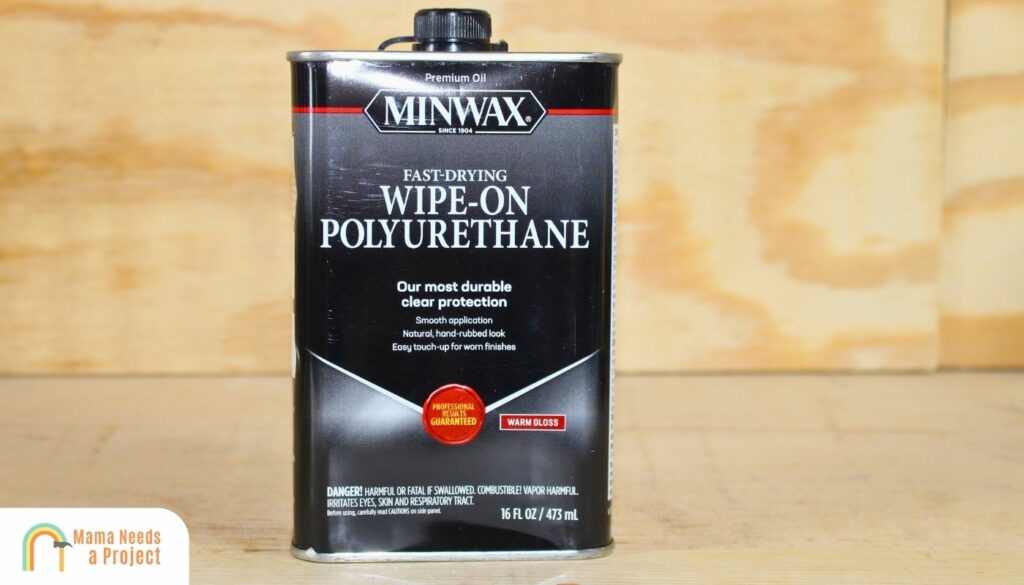
Deciding what finish to use is really a matter of personal taste. If you aren’t sure what you like, test different finishes on pieces of scrap wood and see which one you like best!
Best Stains for Birchwood
You can stain birch plywood with just about any wood stain out there, but some types are easier than others, and different kinds of wood stain act differently when they are applied to the wood.
1. Oil Based Stain
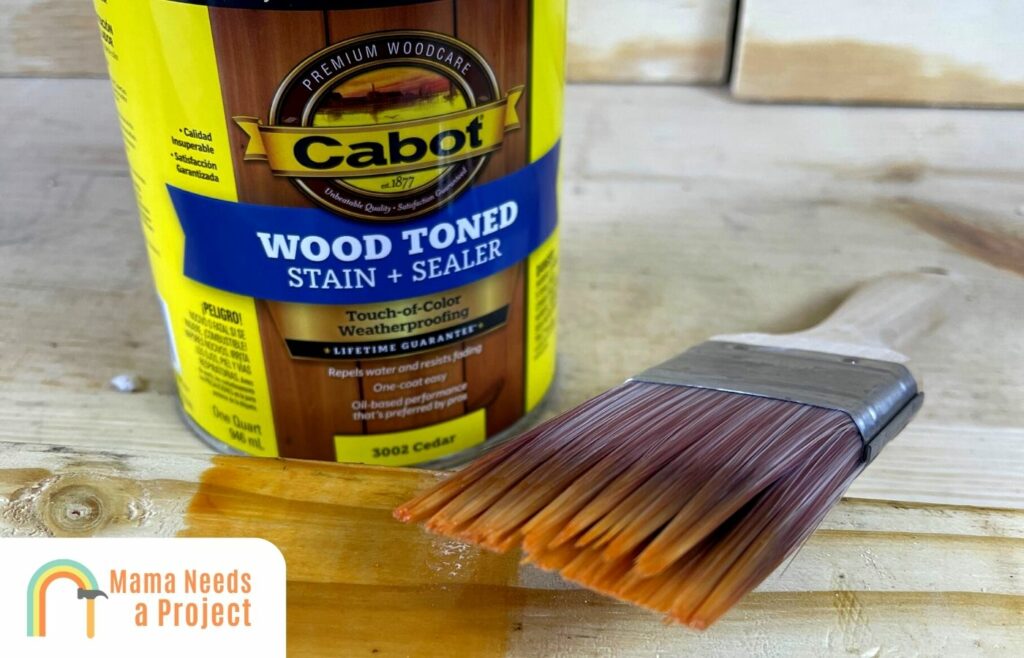
Oil based stains are designed to distribute color evenly, with deep penetration, so they are one of the most popular choices for birch plywood that I highly recommend. With oil based stains, it’s easier to achieve a rich, vibrant color on your wood’s surface.
Oil based stains are also the best choice for outdoor projects because they provide maximum protection against UV rays, decay, and insect damage.
Any method can be used to apply oil based stains, including paint sprayers and rollers, but for the most even application, I recommend using a lint-free rag. Oil stains are meant to be wiped after they are applied, so the easiest method is to spread the stain on, wait about 10 seconds, then wipe off the excess stain with a rag.
Oil based stains can take a bit longer to dry than a water based stain, but this gives you more protection.
You can find oil based wood stains in a variety of colors depending on what you’re going after. You can find dark wood stains or light wood stains that are perfect for staining birch plywood.
When it comes to stain colors, I always recommend applying a small amount on a scrap wood to see if it’s the color you want before applying it across your entire project.
2. Water Based Stain
Water based stains are another option to stain birch plywood or solid wood. These aren’t quite as durable as oil based stains, but they’re easier to work with and they dry much faster.
Water based stains can be applied to birch plywood using any application method, but the best methods to use are brushes and rags. If you’re using a brush, keep a lint-free rag on hand so you can wipe up excess stain as you’re applying it.
One thing to keep in mind if you decide to use water based stain for birch plywood is that using a wood conditioner is even more important. The reason that stains appear blotchy on birch plywood is that some parts of the wood absorb wood stain better than others, and the wood conditioner helps balance that out.
3. Gel Stain
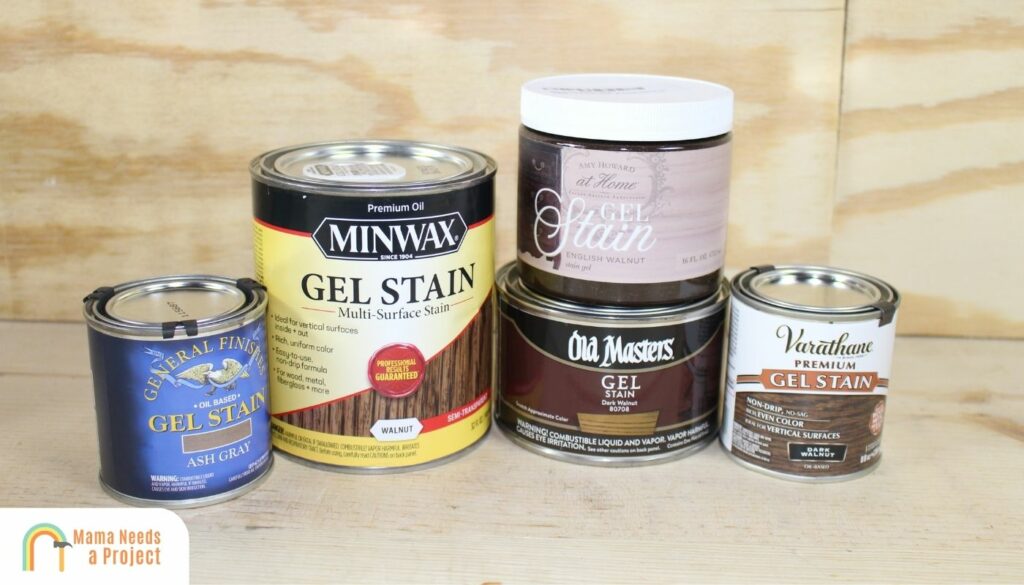
Gel stains are becoming more and more popular, but they work a little differently than traditional oil and water based stains.
Instead of penetrating into the wood, gel stains primarily sit on top of the wood surface. This makes gel stains a top choice for staining birch plywood, because you’re less likely to have blotchy results.
However, because of the way that gel stain sits on top of the wood, application of this type of wood stain requires a different technique. The first thing to note with gel stains is that you don’t need to use a pre stain conditioner. This means using gel stain can save you a little time and money which I’m all for.
Another thing to consider is that gel stains are thicker, so they don’t drip like oil and water based stains, which can make the application a little less messy.
You can still use your favorite stain application method with gel stain. The biggest difference is that you want to let it sit for about 3 minutes before wiping off the excess stain.
4. Spray Stain
Another one of my favorite ways to stain birch plywood is with spray stain.
Spray stains are similar to spray paints in that they come in an aerosol container. They are the easiest application method for many types of woodworking projects, and they also work great for staining birch plywood.
To stain birch wood with a can of spray stain, you need to prepare the wood the same way you would with other methods, including using a pre stain conditioner.
The spray nozzle on cans of spray stain is specially designed to provide maximum coverage, but when you’re using a spray stain, you can still wipe away excess stain after you spray it on to ensure a smooth, even coverage. Wait up to three minutes, then wipe it with a clean rag.
If time is a factor, try using Minwax Polyshades Stain & Polyurethane. It’s one-step, no-wipe coverage that stains and seals your wood, and it’s available in various colors and finishes. It might take a few coats to achieve the color you want, but it looks great and it’s easy to apply so I love it.
What is Birchwood?
Birch is a thin-leaved deciduous tree in the same family (Betulacea) as alders and hazel trees. Birch wood is classified as a hardwood, but not all species rate the same on the Janka scale.
For example, paper birch is 910, which is about the same as cherry, while sweet birch is 1470, which is harder than many types of maple.
Birch trees are a fast-growing, short-lived species compared to other types of hardwood. They are a pioneer species, which means they are one of the first to appear after forest fires and other ecological disruptions.
Different species of birch trees live for varying amounts of time. Most of them live about 60 to 90 years, but if they are happy, they can live for hundreds of years. Birch trees like cool, moist soils, and some species only live about 20 years when they are planted as ornamentals.
Where Does Birchwood Come From?
Birch wood is manufactured in a few different places in the world, but the leading producers of birch plywood are Finland and Russia. Americans use a lot of Russian birchwood, and in 2020, approximately 70% of the timber products imported into the United States from Russia were birch plywood.
Birch plywood is also manufactured in Canada and the US, mostly in the eastern parts of North America. However, there are birch plywood manufacturers all over North America, from Florida and Texas to Illinois and British Columbia.
Characteristics of Birchwood
Birch wood is strong and durable, making it a favorite for woodworkers and builders everywhere. Learn more about the key characteristics of birchwood.
Grain
Birchwood is typically straight-grained with a fine texture. Sometimes, you’ll see a curly wave to the grain pattern similar to cherry wood, but if you’re looking for an interesting grain pattern, birch wood is not usually the best wood for that. However, many people prize birch plywood for its straight grain patterns.
Color
Birch plywood is often stained for projects like furniture, such as bed frames, doors, and cabinets, but it has a beautiful color that a lot of people prefer unstained.
Birch has white sapwood and a light reddish brown heartwood, and although most birch plywood is light-colored, it tends to yellow over time.
Durability
Yellow birch wood rates 1260 on the Janka scale, making it strong and durable. Silver birch wood has a Janka hardness of 1210.
Not all species of birch have the same strength and durability, but when it comes to plywood, it will probably be made from either yellow birch or silver birch, and it’s comparable to hardwoods like maple.
Environmentally Friendly
Since birch is a fast-growing tree, it’s highly sustainable. It’s an abundant resource in many arboreal forests in the northern hemisphere, and there is little devastation to woodlands caused by harvesting birch trees.
Birch trees are a pioneer species that readily colonize areas that have been disturbed by logging and forest fires, so it’s one of the best renewable resources when it comes to lumber products.
Here’s a great video showing you the before and after of staining birch plywood.
Staining Birch Plywood vs. Other Types of Plywood
If you need to stain birch plywood for your next DIY project, it’s not hard to do, but it takes a little more care than staining other types of plywood.
Staining plywood takes time if you want professional results, no matter what type of wood you’re staining. The main thing to remember when staining birch plywood is that it has small pores and absorbent wood fibers that can result in blotchy, uneven stains if you don’t prepare the wood properly.
FAQs
Can you paint birch wood?
Yes! Birchwood can be painted but it’s important to prep the wood before applying paint to get a smooth, even coat.
Can birch plywood be stained?
Yes! Just like how you can paint birch plywood, you can stain birch. Staining birchwood takes a little more work and effort than other woods, but it can look amazing once completed.
What is the best birch stain?
There are many great birch stains you can use, depending on the color you want. You could go with a dark stain like the Minwax Red Mahogany or a light stain color like the Minwax Special Walnut color.
How many coats of stain should I apply on birch plywood?
For better protection, it’s best to apply at least 2 to 3 coats of stain on your project. That said, depending on the color of your stain or the desired amount of protection, you may want even more. For example, if you’re staining birchwood a darker color, it may require more coats than a light stain.
Final Thoughts
Birch is a beautiful wood that’s strong, durable, and it looks amazing when stained correctly.
While applying stain on birch plywood can take some more effort, it’s well worth your time. For the best results, be sure to prep your wood beforehand and stain birch plywood evenly before giving it time to dry before adding additional coats.
No matter what type of stain you use – your birch plywood is going to look amazing once completed!


